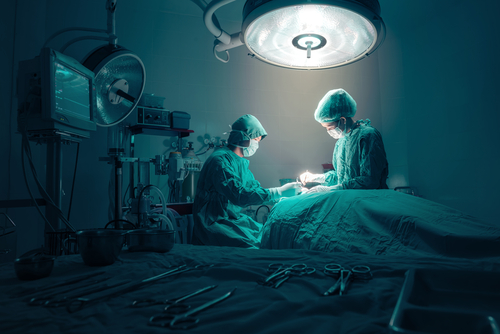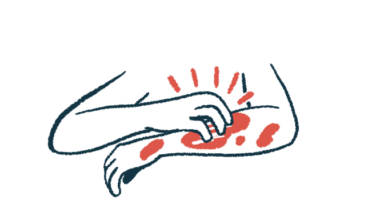Care, Management of EB Simplex Infant During Eye Surgery Detailed in Case Report

The care and management of a 6-month-old baby with epidermolysis bullosa (EB) simplex during surgery for a corneal transplant was described for the first time in a recent case report.
The study, “Anaesthetic management of a rare case of paediatric epidermolysis bullosa,” was published in the Indian Journal of Anaesthesia.
EB is a rare disorder characterized by abnormally high skin fragility that can result into serious blistering affecting both the external and internal tissues. Due to extensive, long-lasting wounds, patients are highly susceptible to bacterial colonization of the skin, which can lead to life-threatening infections in the early years of life.
The three most common subtypes of this disease are EB simplex, junctional EB, and dystrophic EDB, which differ in severity, age of onset, and disease course.
Given the fragility of the skin and internal tissues, these patients need special care when having surgery. In particular, special attention should be paid to their positioning, asepsis, pain relief, and avoiding unnecessary and excessive skin and tissue trauma.
In this study, Indian researchers are reporting for the first time the case of an infant with EB simplex who received surgery to replace the right cornea, the transparent, protective outer layer of the eye.
The girl had been diagnosed with EB simplex at birth and was 6 months old at the time of surgery. She had signs of malnourishment, weighing only 3 kilograms (about 6.6 pounds) and with stunted growth, due to poor eating caused by wounds in the mouth.
“Nutritional deficiency leads to hypoproteinemia [abnormally low levels of protein in the blood], anemia, and electrolyte imbalance,” which may affect how anesthetic agents and other therapeutic compounds work in the body, according to the researchers.
The infant had multiple skin erosions, numerous and widespread blisters, and healed scars all over her body. An airway examination revealed tongue attachment to the floor of the mouth with involvement of the cheek and the area surrounding the mouth. But it was not possible to visually confirm if the pharynx and trachea were affected.
For the surgery, general anesthesia was induced with 4–8% sevoflurane, given through a gently held face mask. To perform this procedure, the anesthesiologist used a lubricant (liquid paraffin) on his fingers and on the mask’s cushion to prevent injury. Sterile gloves were used during airway management.
To prevent damage to the left eye, which was not being operated on, the clinical team applied a moisturizing ophthalmic ointment and moistened protective gauze. While all her limbs showed extensive skin lesions, they were able to find intravenous (into-the-vein) access on her right leg.
After anesthesia was induced, a muscle relaxant was given to assist with intubation, with an uncuffed tube using a laryngoscope that was lubricated with a water‑based jelly to prevent trauma.
Oxygen levels were measured during surgery using different fingers. To monitor her blood pressure, paraffin gauze was applied under the cuff to prevent friction trauma. To monitor her heartbeat, doctors used an electrocardiogram (ECG) system, placing the electrodes without the adhesive part and leaving only the gel portion, which was secured by placing cotton pads to prevent any mechanical injury.
“Changing the site of pulse oximeter probe frequently is helpful in preventing new onset lesions, to avoid burns, pressure erosion, skin necrosis and digital sensory loss,” the authors wrote.
After the surgery was over, the anesthesia and the neuromuscular blocker were reversed, and the tube was removed after she was fully awake. To provide pain relief afterward, she received paracetamol intravenously.
“Possibility of airway complications such as edema [swelling] and obstruction due to blister and scars after extubation requiring emergent tracheostomy [opening in the neck to help with breathing] should be kept in mind,” the researchers warned.
“Some authors reported that intubation might predispose the patient to formation of intraoral bullae, airway obstruction, and extensive hemorrhage,” they added.
The postoperative period was uneventful with the exception of the development of fresh bulla on the left buccal mucosa, which healed spontaneously over the next 48 hours. The infant was discharged from the hospital seven days after the surgery.






